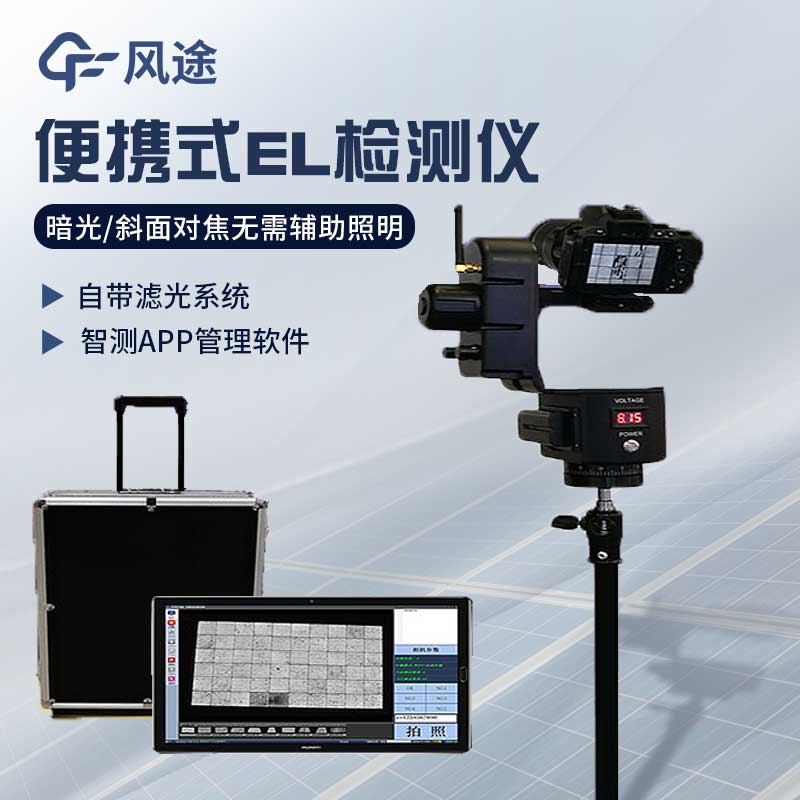Meteorological environment monitoring equipment supplier
Insist on doing high-precision customer favorite technology products
In the era of vigorously developing renewable energy today, photovoltaic power generation, as a clean and sustainable energy form, has attracted much attention. As the core component of photovoltaic power generation systems, solar cell modules' quality and performance are directly related to the power generation efficiency and stability of the entire system. To ensure the quality of solar cell modules, "el detector" is needed.
Solar cell modules are bonded together by photovoltaic glass, battery cells, backsheets, etc. through adhesive films, and aluminum frames are installed to provide strength support. However, battery cells themselves are very fragile. After being subjected to external forces such as trampling, impact, and vibration, problems such as hidden cracks and fragments are prone to occur, resulting in internal damage to the module, reducing power generation power and even causing safety risks. Therefore, photovoltaic modules must pass EL detection before leaving the factory.
In the process from module leaving the factory to project grid connection, there are two links that are most likely to cause hidden cracks in the module. One is the transportation link. Insecure packaging, long-distance transportation, and bumpy roads may all lead to hidden cracks in the battery cells inside the module. The second is the installation link. Weak awareness of workers, rough installation, and trampling on modules will also cause hidden cracks in the battery cells inside the module. In view of this, EL tests are generally carried out at two time points after the module leaves the factory: module arrival inspection and module installation inspection. The owner can decide the sampling ratio by themselves according to the actual situation.
At present, there are three main types of EL testers on the market. The module EL tester can perform EL detection on 1 - 2 modules simultaneously; the string EL tester can detect 12 - 26 modules in one string simultaneously, and can be detected by handheld device video, with relatively higher efficiency; the drone EL tester can perform EL detection on square array modules, conduct fixed-point or large-area inspections, and has outstanding advantages in detecting greenhouses, roofs, and water surface power stations.
Regardless of the type of EL tester, its principle is basically the same, that is, by inputting a certain forward current to the battery cells of the module, using the reverse process of the photovoltaic photovoltaic effect to make the solar cell light up when powered on, that is, the electroluminescence principle. Then, the imaging system is used to send the signal to the computer software. After processing, the EL image of the battery cell is displayed on the screen. Through the analysis of the EL image, it can effectively find whether there are hidden cracks, broken pieces or other defects in the photovoltaic module.
The "el detector" plays an important role in all aspects of the production, transportation, installation and maintenance of solar cell modules. For production enterprises, it can perform rapid detection on modules on the production line, remove unqualified products in time, improve production efficiency and product quality, and also provide a basis for optimizing the production process. In the process of solar power station construction, EL testing can ensure that the installed modules meet quality requirements and reduce the maintenance cost of the power station. For scientific research institutions and testing institutions, the EL tester is an important tool for research and quality certification.
